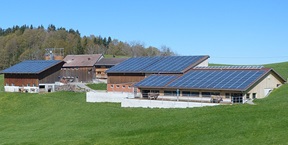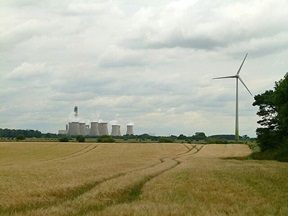New technologies require new instruments. That is also true for distributed energy resources (DERs), predominantly renewable energy. So far, their disadvantages could be eased out in the net. But now, in some locations these resources become the dominant source of electricity. To make sure these don’t disrupt the electricity market, companies have developed new instruments.

A general characteristic of distributed energy resources is that they deliver electricity behind the meter (BTM). How can we ensure that the electricity market keeps on functioning, as these new and variable technologies penetrate into the market? That is the question that Lux Research posed itself. And they provide an answer to it, in their report Monetizing Distributed Energy Resources from Behind the Meter.
Variable value
It is clear that electricity generated by distributed energy resources represents an economic value. But this value differs a lot, depending on the moment of the day, week or year at which the energy is being produced. On a calm evening (no sunshine, no wind) the value may be a lot; on a windy sunny day this value may be even negative, as there will be a glut, and users sometimes cannot absorb the extra amount generated. How then should we make sure that the electricity market will not be disrupted by distributed energy resources?
The instrument used in this process consists of monetization of these resources, i.e. giving a monetary value to them. The report distinguishes four mechanisms for such a process: virtual power plants, community energy sharing, peer-to-peer energy trading, and enabling markets for distributed energy resources. All these solutions require regulatory support; and all try to arrive at the best solution for both owners of DERs and utilities.

How to stabilize the grid
In principle, we can arrive at net zero targets for CO2 emissions with renewable energy by deploying distributed resources like solar and wind energy. The target year for this achievement is 2050. IEA, the International Energy Agency, estimates that in order to arrive there, we need to globally produce 60% of our electricity from distributed energy sources in 2030 (now: 30%). If we just look at the price of distributed energy sources, this should not be difficult to achieve. They are cheaper now than fossil-powered electricity. The problem lies in the grid. Among the issues are voltage and frequency fluctuations; and the need for reserve capacity, for use in case the sun doesn’t shine and the wind doesn’t blow.
There are two key stakeholders in this space, says Lux: owners of distributed energy resources, and distribution utilities. DER owners will want to maximize the use of their resources; by storage equipment and flexible loads through smart thermostats, that can adapt to changes in supply. Distribution companies should manage voltage and frequency, and plan distribution network upgrades. On top of that, regulatory bodies should ensure that qualified companies can participate in the market, and ensure critical infrastructure reliability. Software and hardware engineers should develop technologies for monitoring, control and optimization of distributed energy resources.
Virtual power plants
What about the solutions? The Lux report distinguishes four. Virtual power plants (VPPs) are bodies (‘aggregators’) that operate a group of small generators, batteries and loads as if they were a single power plant. As such, they can enter wholesale markets. VPPs are well established in commercial and industrial applications. Aggregating residential equipment is new. But the mechanism is well-known; and individual participants don’t need to find the most attractive solution – they leave that to the aggregator. Main disadvantage: aggregators keep 30-40% of the revenues.
Community energy sharing
Community energy sharing programs maximize self-consumption before calling on the market for supply or sale. Participants form a virtual community. The use of all assets is optimized to minimize the amount of power bought or sold. Such sharing programs ease congestion in the distribution grid. But they require participants to accept that the program can to a certain extent control their energy use; for instance room temperature. In order to be successful, the pool needs to consist of different kinds of users, both private and commercial.
Distributed energy resources markets
In a step further down this road, we find distributed energy resources markets (DER markets). These operate as wholesale markets. Participants bid into the market to sell their electricity – or buy it. Markets can be private or public. The advantage of such a scheme is that it provides transparent price signals and available capacity. But such schemes aren’t allowed yet.
P2P energy trading
The same holds true for the fourth solution: P2P energy trading. Here, a participating prosumer is matched to a consumer through an automated optimization program. This form of trading is virtual and doesn’t show in the physical grid. Price signals are transparent, but the scheme doesn’t ease distribution network congestion. Moreover, present rules inhibit the use of this mechanism.
In a grid connected network, grid outages will present a serious problem. In California, with much renewable energy on the grid, an independent operator can impose load reduction; in order to prevent this from happening. Moreover, the program offers a reward for each kWh delivered in emergency conditions (at the moment $2 per additional kWh delivered). On the other hand, there are also programs for turning up demand, for instance during high wind-generation output. This will prevent any kWhs to be thrown away.
Will the grid support the growing supply?
And yet, a major problem is that distributed energy resources now grow so fast that the grid cannot cope with them. In the Netherlands, market conditions for wind energy have deteriorated substantially in the past year. Prices for materials like steel and copper have risen a lot. Interest rates have risen; and costs for labour and maintenance. That adds substantially to the price of wind parks.
But the biggest problem is the grid’s capacity. In ther Netherlands, as much as 80% of planned projects is being stalled because of insufficient grid capacity. The Netherlands have started too late in strengthening the grid and is still suffering from that shortcoming. But strengthening the grid isn’t all we need. We will also have to produce hydrogen from green electricity; store electricity in batteries; and use green electricity more flexibly and more efficiently. In other words, we need to revise the entire energy system. Also involving electricity contracts. Governments can conclude two-way contracts. In such a Contract for Difference (CfD), the developer settles for a fixed electricity price. If market prices are lower, the government will pay the difference; if market prices are higher, the developer will pay back the excess earned to the authorities.
Takeaways
Lux Research formulates three takeaways.
- The development of multiple distributed energy resources is vital to open up new opportunities. Therefore, regulatory barriers need to be lifted.
- Management systems of distributed energy resources, both behind and in front of the meter, will result in higher value and broader applications.
- Energy companies are reorienting themselves in this field. Flexibility is of the essence: being able to adapt to different conditions, for instance in terms of geography or of market regulations.
As the share of distributed energy resources grows, we need new instruments. For stabilization of the market, we need new contract varieties. For stabilization the network, we need to keep in check the stability of voltage and frequency, and have enough reserve capacity at hand in order to meet demand or address power unavailability.
Interesting? Then also read:
Smart grids: the power of the small scale
A Marshall plan for European solar PV production capacity
Digitisation and energy transition
